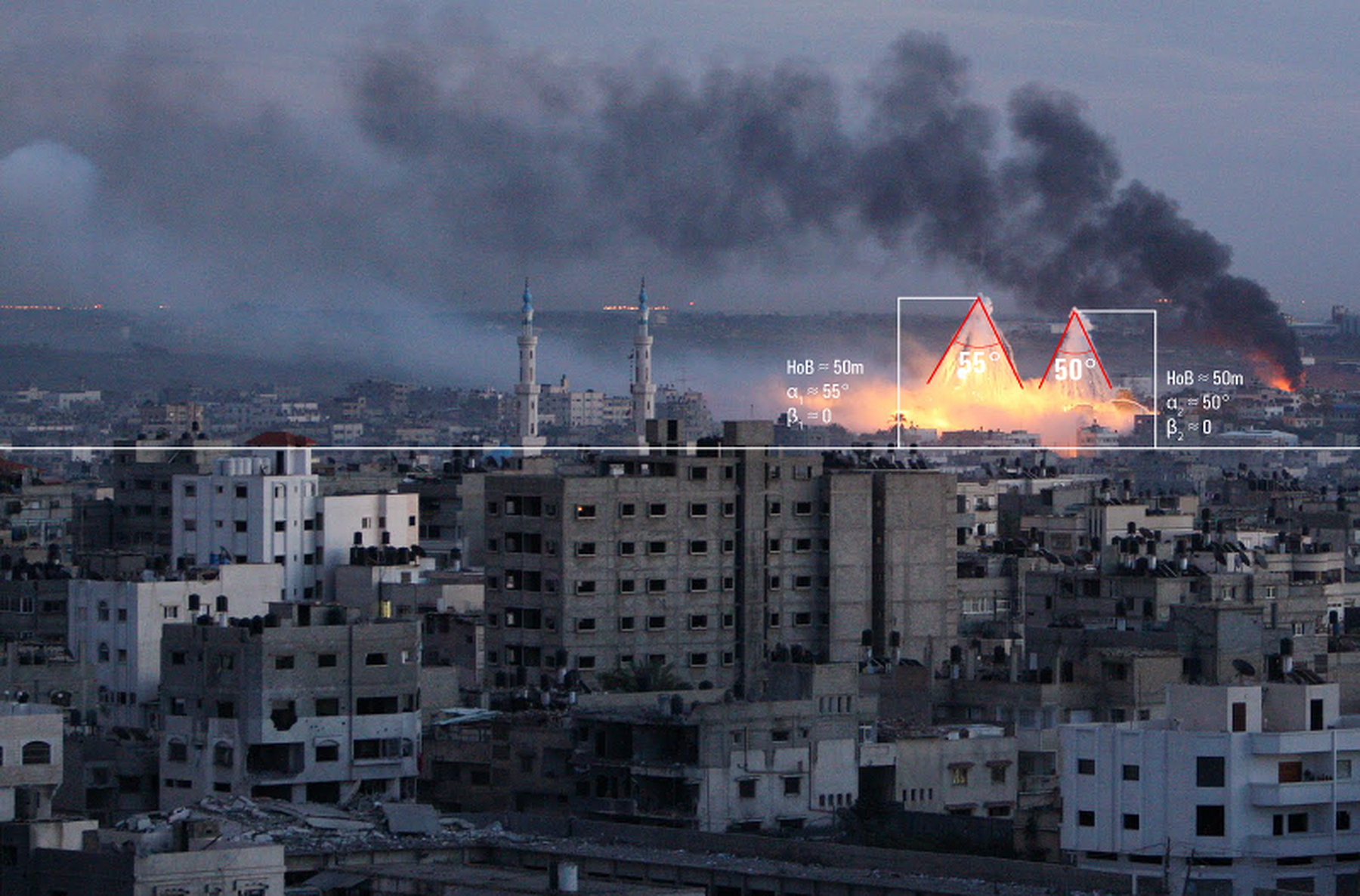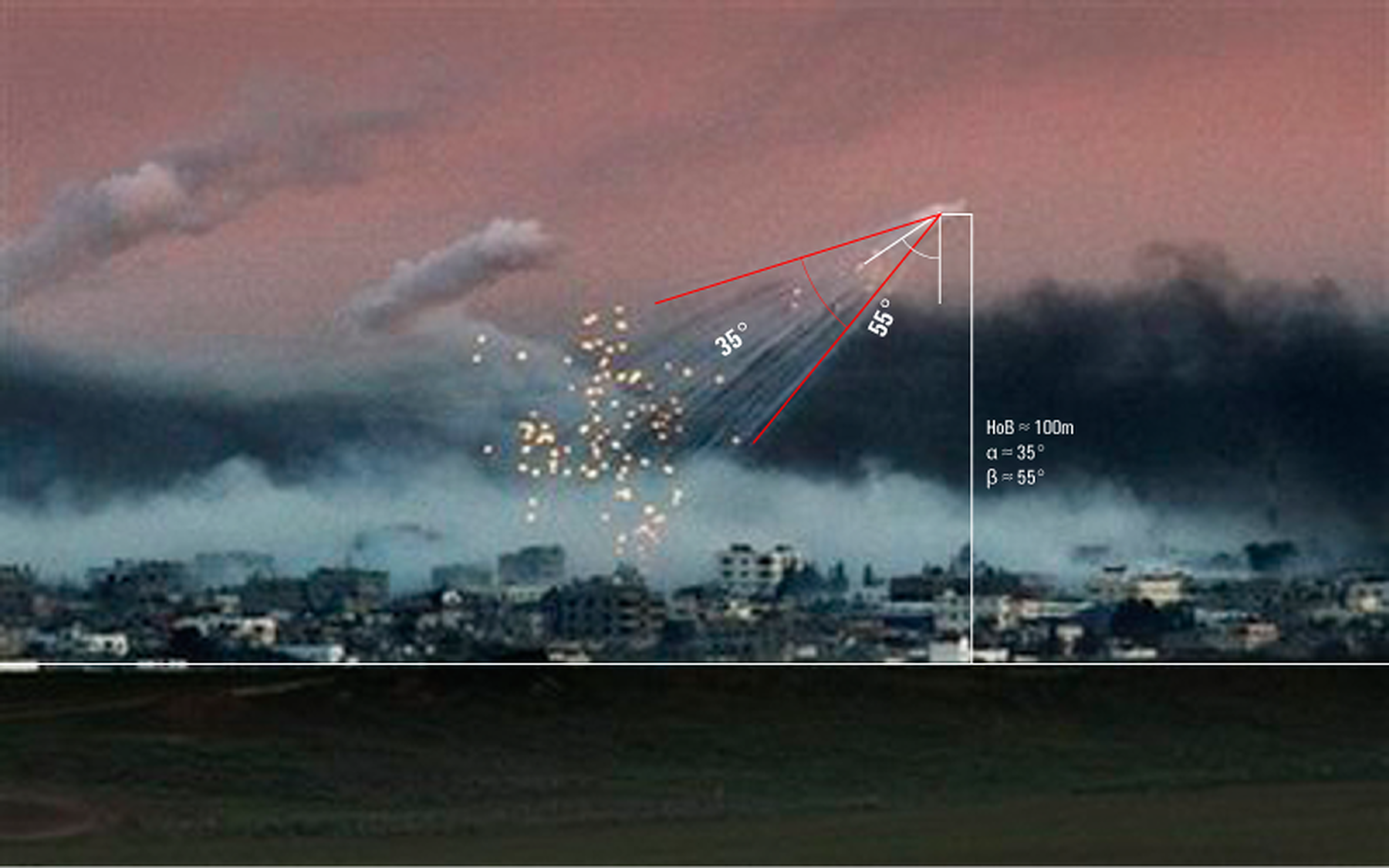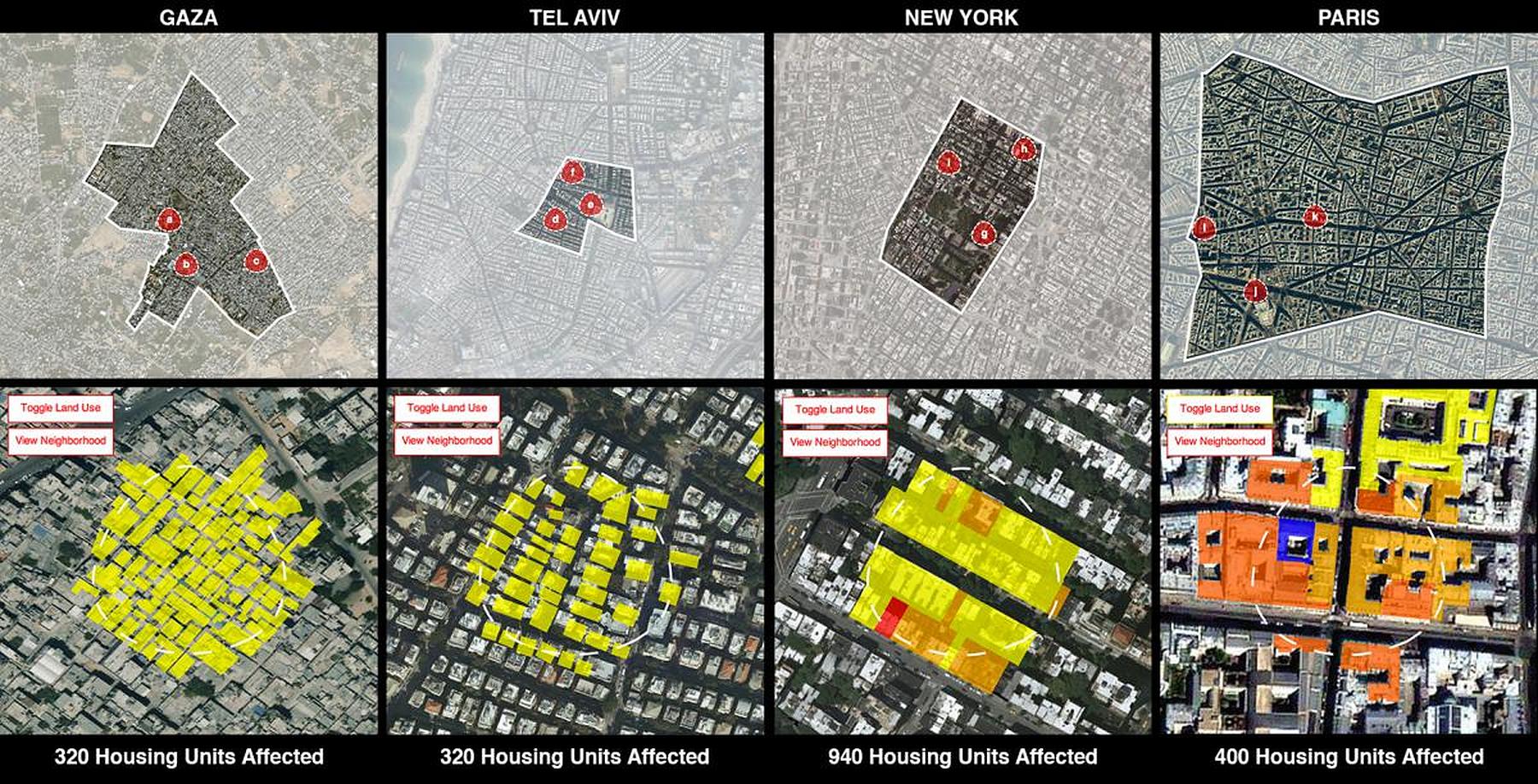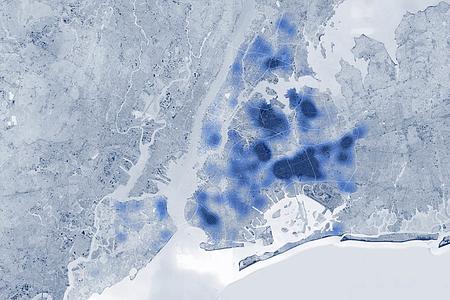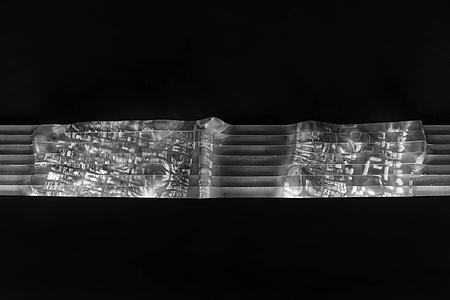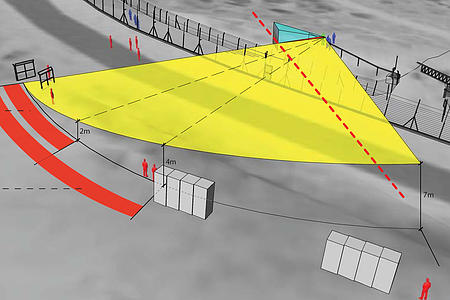White Phosphorus Report
This report seeks to close legal loopholes that allow the use of white phosphorous munitions in densely populated urban environments. Focused on documenting the indiscriminate effects this weapon often has on civilian populations, this work was submitted to the Israeli high court as part of a petition seeking to ban its use.
Explore the report here:
http://www.situresearch.com/white_phosphorus/index.html
Clients
Michael Sfard and Emily Schaeffer
Yesh Gvul
Collaborators
Forensic Architecture, Chris Cobb-Smith
Location
Gaza
Completion
2012
The main objectives of this report are to analyze the incendiary effects of the M825 white phosphorus projectile and to evaluate the civilian exposure that may be expected in such scenarios. Moreover, this visual study aims to incorporate a host of digital tools which have never been used in the context of human rights, while maintaining a suitable format for legal interpretation; revitalizing the nature of a human rights report.
This work was produced at the request of Attorneys Michael Sfard and Emily Schaeffer as part of a petition calling for the ban of all white phosphorus munitions presented in hearings before the Israeli High Court and the United Nations. Forensic Architecture and SITU Research were tasked with modeling the behavior of the M825A Air Burst White Phosphorus munition and quantifying its effects on densely populated urban environments.
Often used as a smoke screening or signaling device, in recent history white phosphorus has been commonly deployed in densely inhabited areas. When deployed in urban contexts, the munition is more likely cause severe chemical and thermal injuries to civilians, as well as the destruction and contamination of civilian property. In most cases, the damage done by this munition is the result of its incendiary qualities. Since it was adopted in 1980, the United Nations Convention on Certain Conventional Weapons (CCCW) Protocol III clearly restricts the use of incendiary weapons in circumstances where they are likely to cause harm to civilians.
In order to be governed by Protocol III, however, the law states that the weapon must "primarily designed" as an incendiary. Originally designed as a smoke screen, the incendiary effects of the M825A are considered “secondary,” and thus the use of white phosphorus munitions is not regarded as a war crime even when deployed in civilian neighborhoods—this despite their clear and indiscriminate proliferation of burning felt wedges. In an attempt to close this legal loophole, SITU collaborated with Goldsmiths University's Centre for Research Architecture to develop an effects based analysis (EBA) of the American made white phosphorous munition, the M825, used in densely populated urban areas by the United States Military in Fallujah in 2004, and by the Israeli Defense Forces in Gaza during 2009. While the ultimate goal of this work is to amend Protocol III, Attorneys Michael Sfard and Emily Schaeffer, along with the human rights organization Yesh Gvul, submitted the collaborative report to Israel’s High Court of Justice to advocate the prohibition of the weapon within the Israeli Defense Force. The report was presented at the United Nation’s office in Geneva, during an annual meeting of CCW (Convention on Certain Conventional Weapons) state parties.
Central to this report is an understanding of the M825 munition. Depicted above, the weapon, typically fired from a 155mm howitzer, launches a single shell thousands of meters to its target destination. As it approaches its destination, at a height of between 100-200 meters above its target, the shell opens in two parts releasing the 116 white phosphorus soaked felt wedges contained inside. As soon as the wedges are exposed to oxygen they begin to burn at temperatures up to 1000˚F. Analyses of these airbursts are shown below.
There are three distinct ways the M825 munition can cause serious civilian harm—direct corporeal contact with the felt wedges, inhalation of the toxic smoke; and ignition of the targeted environment. To better understand these effects, the report samples from a plethora of civilian and news report footage of M825A airbursts. The team defined bursts by Height of Burst (HoB), opening angle, inclination of burst, and picture plane displacement as seen in the video below. Isolating and studying these parameters allowed the report to individually analyze the effects on coverage area within two common military categorizations of bursts, high angle and low angle fire.
Applying this knowledge of burst dynamics, the report goes on to evaluate and quantify the urban impact of a simulated M825A detonation in densely populated cities, other than Gaza, including Tel Aviv, Paris and New York, NY. These urban-scale impact simulations describe both the potential amounts and types of structures affected in each location.
To understand the weapon's impact at an architectural scale, SITU repeated 150 parametric simulations of detonations over the same 30,000 sq. meters in Jabalia, Gaza. These simulations model the 116 white phosphorus wedges that make up the M825’s payload, and estimate where each inextinguishable piece could land within a random distribution. Watch a video of one such simulation below.
As the report concludes, the coverage area of the munition can affect between 50–300 persons in urban areas, and up to 1000 people in specifically dense areas, such as New York City. Because the distribution of the M825’s 116 white phosphorus wedges is indiscriminate, any person or property located within the coverage area must be considered at risk. Click here to view the interactive summary.
